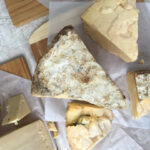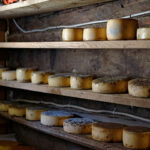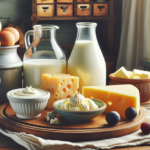Busting Food Myths with Nicole Senior
Myth: Ancient grains are better for you.
![[NICOLE]](https://glycemicindex.com/blog/2007/dec2007/nicole125.jpg)
Nicole Senior
Fact: Old and new grains are good for you.
Ancient grains such as spelt, amaranth and quinoa are fashionable at the moment (along with chia, covered in Foodwatch), albeit hard to get and more expensive. The rising popularity of these ‘old-world’ grains is great because variety in the diet, and a variety in agricultural production, is good for us and good for the environment. However, there are plenty of grains and seeds that are less trendy, but more available, affordable and just as nutritious.
Spelt bread is sold at a premium, but what it is? Spelt is an age old variety of wheat, and spelt bread has a medium GI, although some multi-grain varieties make it into the low category. While spelt is advertised as ‘easier to digest’, and ‘suitable for those allergic to wheat’, it is certainly not suitable for those with a wheat allergy or coeliac disease and there is little published evidence for easier digestibility. Some people attribute all sorts of health problems and digestive symptoms to eating wheat, and many will get relief from varying the grains they eat. However, those with symptoms often have a more complex food chemical (natural and added) sensitivity problem rather than intolerance to wheat. But variety is the spice of life, so vary your diet from wheat thrice daily with, for example, oats for breakfast, rice-salad for lunch, and barley hotpot or polenta-based dish for dinner.
Amaranth has been growth for thousands of years and traditionally eaten by the Aztecs. It is also gluten-free and provides a welcome ‘starch change’ to rice and potato on the dinner plates of those with diagnosed coeliac disease. It is slightly higher in protein than other grains at 14% (uncooked form) and the plant is very hardy. You can find amaranth breakfast cereal in health food stores and some supermarkets, priced at a premium. Puffed or ‘popped’ amaranth has a high GI. If you’re looking to eat something healthy and different for breakfast, try making your own cereal using a variety of puffed grains (corn, millet, brown rice, buckwheat), rolled oats, chopped nuts and dried fruit – variety in a bowl. Store your designer cereal in a cool place in an airtight container.
![[QUINOA]](https://glycemicindex.com/blog/2009/august2009/quinoa_stuffed-veg250.jpg)
Photo of vegetables stuffed with quinoa: Ian Hofstetter
Quinoa (pronounced keen-wa) is grown in the Andes mountains and was consumed by ancient Incans, cementing South America as the hotspot origin for ancient grains. Like other grains it is high in carbohydrate (68%), low in fat (4.8%) and moderate in protein (12%), and it is gluten-free as well. You cook it similarly to rice – 1 cup dry quinoa to 2 cups water. It has a low GI when cooked, cooled and re-heated, which fits in nicely with cooking a large batch and freezing in meal-size portions for convenience. You can also use it to make a porridge.
I cooked some quinoa recently, and served it in place of pasta with vegetables and butter beans in tomato-based sauce. I enjoyed the tiny grains, but my beloved was less keen on the ‘funny rice’. Sometimes it’s hard being a food pioneer, but it won’t stop me!
If you’d like to find out more about the health benefits of wholegrains and how to cook great recipes using them, check out Nicole’s book www.eattobeatcholesterol.com.au



![[SUN]](https://glycemicindex.com/blog/2008/oct08/nicole_books300.jpg)




